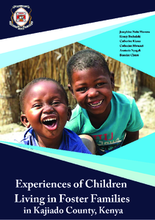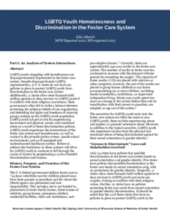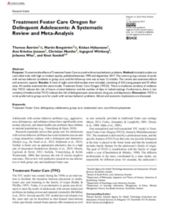Displaying 561 - 570 of 2214
The Pathways of Care Longitudinal Study (POCLS) is the first large-scale prospective longitudinal study of children and young people in out-of-home care (OOHC) in Australia.
Country fact sheet for the UN Committee on the Rights of the Child; Philippines.
This study adopted a phenomenological research design, purposively sampling 26 preteens and teenagers living, during the school term, in a Charitable Children's Institution (CCI) that doubles up as their School and then moving to live with foster families during the school holidays. The focal areas of the field study were the young people's experiences in the CCI, the transition to the foster families, and the young people's experiences in foster care.
This analysis of system dysfunction in the U.S. involving legislative powers, child welfare agencies, and peripheral systems, such as juvenile justice, schools, and healthcare, reveals a distinct misalignment in shared values.
This study aimed at investigating the incidence of placement breakdown in Flemish family foster care (Dutch speaking part of Belgium) for unaccompanied children (UC), and to explore the association of breakdown with foster child, foster family and case characteristics.
The aim of this paper is to examine the effects of Treatment Foster Care on youth with serious behavior problems.
This population‐based register‐linkage study assessed the likelihood of OHC placement in different gestational age groups using multivariable Cox regression models.
This study reports on trans adults’ fears of discrimination and openness to child characteristics in the adoption/foster care process in the U.S., relative to cisgender sexual minority parents.
The objectives of this study were: (a) to identify the rate of placement breakdown in Spain, understood as the unplanned termination of a foster placement; (b) to explore the variables associated with foster placement termination, and finally (c) to determine to what extent each variable can explain placement breakdown.
The aim of this study is to explore foster child characteristics and the acceptance of foster children, by birth children and to compare mothers’ perceptions to birth children’s own perceptions.




